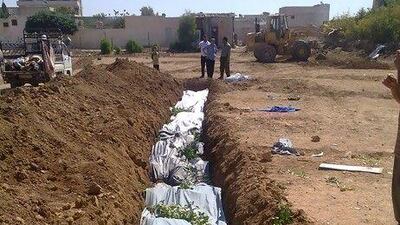DAMASCUS // Despite its huge scale and proximity to the centre of Damascus, the killing of up to 350 people in Daraya seems unlikely to prove a dramatic watershed in the struggle for Syria, beyond pushing it further down the dark path towards sectarian civil war.
Both those supporting President Bashar Al Assad, and those backing the uprising against him, may have had reason to hope the assault on Daraya would serve as a turning point in their favour.
As news of the mass killings spread, some activists believed the shock of discovering such horrific bloodletting had been committed on the capital's doorstep would finally spark a massive, open rebellion against the authoritarian regime in Damascus.
However, rather than taking to the streets in large numbers, holding a citywide strike or even a collective minute of silence out of respect for the dead, central Damascus carried on very much as before.
Its sprawling working-class suburbs may be besieged by tanks and bloodied, but the crucial upper- and middle-class core of the city, publicly at least, remains unmoved and disconnected.
"After I heard about the Daraya massacre I hoped Damascus would finally stand, that it would say 'enough is enough'," said a city resident of the wealthy Abu Rumaneh district who has long backed the uprising. She asked not to be identified.
"It's so depressing that nothing has changed. Most people in Damascus are sick of the regime and believe it has failed, but they are still prepared to sit and watch in silence as it kills their countrymen," she added.
For the regime, military operations in Daraya were supposed to stop armed rebels gaining a strong platform from which to launch a new assault on the capital.
State-run media claimed "a large number of terrorists" had been "cleansed" but there is little reason to expect it will be more than a temporary setback to the rebels.
Already some of the government troops taking part in the operations have been pulled out and apparently redeployed, as loyalist forces are once again sent to face a growing rebel threat to the east of Damascus.
Speaking before the Daraya siege, opposition figures in the town had said they believed government troops were stretched too thin to control all of the restive districts surrounding the capital.
"They can hit and hold one area at a time but they cannot face us if we all fight at the same time, so that is what we will do," a rebel in Daraya had said. "We know they will come here and they will hit us, but they will have to leave again to hit the next place and each time they go, we get stronger."
Activists in Daraya say up to 350 people were killed in the assault, which began last Tuesday. One opposition figure in the town had previously put the number of Free Syrian Army rebels in Daraya at 2,000, another had said they number 3,000. If accurate, that means most of the rebel force survived the attack.
And, with women and children among those buried in mass graves on Monday, the assault may only have fuelled Daraya's determination to topple the regime.
The government thinks it has won a military victory in Daraya but it is mistaken - all it has done is make an even bigger enemy of 200,000 people who live right next door to Damascus," said a businessman who lives on the edge of the town.
"If the army killed 400 people in Daraya, it will now have ten or twenty times that number ready to fight it," he said. "These military operations provide no solution to the crisis, after each military victory, things just get worse."
It has also stoked sectarian tensions. Daraya, is a majority Sunni area - with some Christian residents - while the pro-regime forces accused of involvement in the killings are dominated by Alawites, the minority sect that makes up Syria's ruling elite.
A form of sectarian ghettoisation also appears to have commenced to the south of Daraya, where it borders the predominantly Druze and Christian town of Sahnaya.
Over the years the two places had become closely interconnected but they are now divided, a no-man's-land running between the two along the main road that marks their frontier.
To the north, sealed off by government troops, is Daraya. To the south lies Sahnaya, largely pro-regime in its politics and now defended by a regime-endorsed local militia, known as the "popular committee"'.
Druze men carrying assault rifles and shotguns man checkpoints designed to keep out unwanted strangers coming in from Daraya. Sunnis do live in Sahnaya and have not been forced to leave, but there is growing unease among their ranks over developments.
"There are Druze checkpoints now, and they look at our IDs and wave through the other Druze but look twice at all of the Sunnis," said a Sunni resident of the town.
"None of this makes any of us safer; it just makes the divisions worse," he said.

